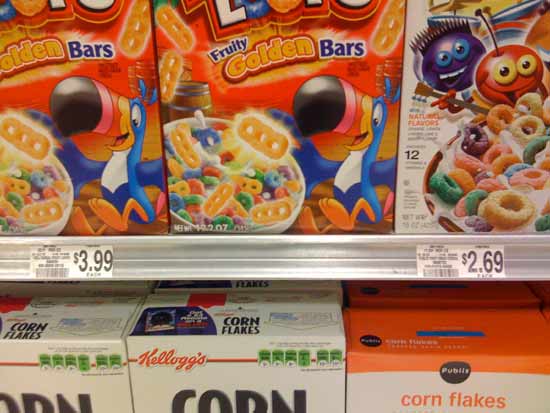 Okay, you have spent time cutting, sorting and filing your coupons; you have studied the sales papers for the best place(s) to shop and are ready to save money on your grocery bill. To make things even better, when you reach the store, you note that there are several unadvertised specials that you think should work out to an even better price than what your coupon can garner, but how can you determine the best price? By learning how to compare and save based on a products unit price, you can save money-even if you don’t have a coupon.
Okay, you have spent time cutting, sorting and filing your coupons; you have studied the sales papers for the best place(s) to shop and are ready to save money on your grocery bill. To make things even better, when you reach the store, you note that there are several unadvertised specials that you think should work out to an even better price than what your coupon can garner, but how can you determine the best price? By learning how to compare and save based on a products unit price, you can save money-even if you don’t have a coupon.

Comparing unit prices is just as effective, especially in the meat and produce department, as using coupons. To efficiently and accurately compare and save in groceries, keep these tips in mind:
- While in many instances, buying the larger size may be better, this not the case every time –think cereal aisle. Be sure to compare the unit price between same-brand items (i.e. 8oz. vs. 4 oz of Green Giant corn).
- Check the cost between frozen, fresh or canned on the same food. When you compare unit price, you will often find that fresh/frozen is cheaper than canned.
- Be sure to re-calculate the unit price of an item with your coupon amount factored in. (Deduct the coupon amount from the price then divide the number of servings into your new cost to find out your unit price.
- As you compare prices, be sure that you are comparing ounces to ounces/pounds to pounds.
When shopping with coupons, it is important to take the time to compare prices between brands for the same product. Sometimes, the savings may only be a difference of a few pennies, but every little bit helps! Also, only purchase a quantity that you will actually be able to use or be able to store.
How to Compare and Save through Unit Price Shopping:
Just because two products appear to be the same size, does not mean that they are. Use these steps to compare unit prices:
- Look for a small sticker on the shelf below the item that lists the unit price, it is usually in ounces or pounds.
- If necessary, convert the unit measures so they are the same (pounds to ounces: divide price by 16; ounces to pounds multiply by 16)
- Determine your needs. If the product is in bulk, make sure you have somewhere to store the unused portions.

2 Comments
Leave a Reply